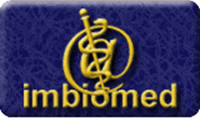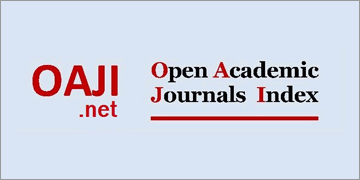TÓXICIDAD DE LA APITOXINA EN UN MODELO DE Artemia salina
Resumen
Objetivo:Determinar la toxicidad del extracto acuoso de Apitoxina mediante bioprospección en el modelo de Artemia salina. Materiales y métodos: Previo montaje de Biorreactor, un grupo fue expuesto al extracto acuoso de Apitoxina (n=20) y el grupo control fue expuesto a agua destilada (n=20) la toxicidad se definió por la muerte de la Artemia salina a las 24 horas de administración del extracto. Se realizó análisis estadístico no paramétrico mediante la prueba de Chi cuadrado de homogeneidad (Pearson) para determinar la diferencia en mortalidad de los grupos.Resultados:El Grupo Control no presentó mortalidad, en tanto el Grupo Apitoxina presentó una mortalidad del 95%. Se demostró una asociación estadísticamente significativa con un p<0,05(IC: 95%) entre la mortalidad de la Artemia salina y la administración de apitoxina.Conclusión:El extracto acuoso de apitoxina presenta toxicidad a una concentración de 0.35 en el modelo de Artemia salina. Palabras Clave: Apitoxina, Artemia salina, ToxicidadCitas
1. Son DJ, Lee JW, Lee YH, Song HS, Lee CK, Hong JT. Therapeutic application of anti-arthritis, pain-releasing, and anti-cancer effects of bee venom and its constituent compounds. PharmacolTher. 2007 Aug;115(2):246–70.
2. Liu C-C, Yang H, Zhang L-L, Zhang Q, Chen B, Wang Y. Biotoxins for cancer therapy. Asian Pac J Cancer Prev APJCP. 2014;15(12):4753–8.
3. Raghuraman H, Chattopadhyay A. Melittin: a Membrane-active Peptide with Diverse Functions. Biosci Rep. 2007 Oct 1;27(4-5):189– 223.
4. Seo B-K, Lee J-H, Kim P-K, Baek Y-H, Jo D-J, Lee S. Bee venom acupuncture, NSAIDs or combined treatment for chronic neck pain: study protocol for a randomized, assessor-blind trial. Trials. 2014;15:132.
5. Seo B-K, Lee J-H, Sung W-S, Song E-M, Jo D-J. Bee venom acupuncture for the treatment of chronic low back pain: study protocol for a randomized, double-blinded, sham-controlled trial. Trials. 2013;14:16
6. Kim SH, Jung SY, Lee K-W, Lee SH, Cai M, Choi S-M, et al. Bee venom effects on ubiquitin proteasome system in hSOD1G85Rexpressing NSC34 motor neuron cells. BMC Complement Altern Med. 2013 Jul 18;13:179.
7. Park HJ, Lee SH, Son DJ, Oh KW, Kim KH, Song HS, et al. Antiarthritic effect of bee venom: Inhibition of inflammation mediator generation by suppression of NF-κB through interaction with the p50 subunit. Arthritis Rheum. 2004 Nov 1;50(11):3504–15.
8. McLaughlin JL, Rogers LL, Anderson JE. The Use of Biological Assays to Evaluate Botanicals. Drug Inf J. 1998 Apr 1;32(2):513–24.
9. Persoone G, Wells PG. Artemia in aquatic toxicology: a review. 2000 Sep 1 [cited 2014 Nov 22]; Available from: http://agris.fao.org/agrissearch/search.do?recordID=AV20120151475
10. Nunes BS, Carvalho FD, Guilhermino LM, Van Stappen G. Use of the genus Artemia in ecotoxicity testing. Environ Pollut Barking Essex 1987. 2006 Nov;144(2):453–62.
11. Badisa RB, Badisa VLD, Walker EH, Latinwo LM. Potent cytotoxic activity of Saururuscernuus extract on human colon and breast carcinoma cultures under normoxic conditions. Anticancer Res. 2007 Feb;27(1A):189–93.
12. Ramachandr S, Vamsikrish M, Gowthami KV, Heera B, Dhanaraju MD. Assessment of Cytotoxic Activity of Agave cantula Using Brine Shrimp (Artemiasalina) Lethality Bioassay. Asian J Sci Res. 2011 Jan 1;4(1):90–4.
13. Meyer BN, Ferrigni NR, Putnam JE, Jacobsen LB, Nichols DE, McLaughlin JL. Brine shrimp: a convenient general bioassay for active plant constituents. Planta Med. 1982 May;45(5):31–4.
14. US EPA O. Methods for Measuring the Acute Toxicity of Effluents and Receiving Waters to Freshwater and Marine Organisms [Internet]. [cited 2015 May 27]. Available from: http://water.epa.gov/scitech/methods/cwa/wet/disk2_index.cfm
15. Moon D-O, Park S-Y, Heo M-S, Kim K-C, Park C, Ko WS, et al. Key regulators in bee venom-induced apoptosis are Bcl-2 and caspase-3 in human leukemic U937 cells through downregulation of ERK and Akt. IntImmunopharmacol. 2006 Dec 5;6(12):1796–807.
16. Ip S-W, Wei H-C, Lin J-P, Kuo H-M, Liu K-C, Hsu S-C, et al. Bee venom induced cell cycle arrest and apoptosis in human cervical epidermoid carcinoma Ca Ski cells. Anticancer Res. 2008 Apr;28(2A):833–42.
17. Cho H-J, Jeong Y-J, Park K-K, Park Y-Y, Chung I-K, Lee K-G, et al. Bee venom suppresses PMA-mediated MMP-9 gene activation via JNK/p38 and NF-kappaB-dependent mechanisms. J Ethnopharmacol. 2010 Feb 17;127(3):662–8.
18. Oršoli� N. Bee venom in cancer therapy. Cancer Metastasis Rev. 2012 Jun;31(12):173–94.
19. Abd-Elhakim YM, Khalil SR, Awad A, AL-Ayadhi LY. Combined Cytogenotoxic Effects of Bee Venom and Bleomycin on Rat Lymphocytes: An In Vitro Study. BioMed Res Int. 2014 Apr 16;2014:e173903
20. Enas MA. Dissection of antimycotic and antitumor effect of honey bee venom in- vitro and vivo. Afr J Microbiol Res. 2013 Jul;7(29):3730–9
Revista Científica
CIMEL
Ciencia e Investigación Médica Estudiantil Latinoamericana
Órgano Oficial de Difusión Científica de la Federación Latinoamericana de Sociedades Científicas de Estudiantes de Medicina FELSOCEM
ISSN versión electrónica: 1992 - 4240
ISSN versión impresa: 1680 - 8398
DECLARACIÓN:
- En caso que el artículo fuese aprobado para su publicación en la Revista Ciencia e Investigación Médica Estudiantil Latinoamericana (CIMEL), cedo mis derechos patrimoniales y autorizo a dicha Revista a la publicación y divulgación del documento en las condiciones, procedimientos y medios que disponga CIMEL.
- Certifico que he contribuido directamente al contenido intelectual de este manuscrito, a la génesis y análisis de sus datos, por lo cual estoy en condiciones de hacerme públicamente responsable de él y acepto que mi nombre figure en la lista de autores.
- Garantizo que el artículo es un documento original y no ha sido publicado, total ni parcialmente, en otra revista científica, salvo en forma de resumen o tesis (en cuyo caso adjunto copia del resumen o carátula de la tesis).
- En caso de que se haya sido publicado previamente, adjunto la autorización original de la Revista donde se realizó la publicación primaria, para su publicación duplicada en la Revista CIMEL.
- No recibiré regalías ni ninguna otra compensación monetaria de parte de la Revista CIMEL por la publicación del artículo.
- No he incurrido en fraude científico, plagio o vicios de autoría; en caso contrario eximo de toda responsabilidad a laRevista CIMEL; y me declaro como el único responsable.
- Me comprometo a no presentar este artículo a otra revista para su publicación, hasta recibir la decisión editorial de la Revista CIMEL sobre su publicación.
- Adjunta a mi firma, incluyo cuál fue mi participación en la elaboración del artículo que presento para publicar a la Revista CIMEL (Según tabla de códigos de participación).
|
|
Códigos de Participación: (Anote estos códigos en la parte correspondiente a su nombre, de acuerdo a su participación dentro del trabajo enviado). |






.png)





 Todo el contenido de esta revista, está bajo
Todo el contenido de esta revista, está bajo  Facebook
Facebook